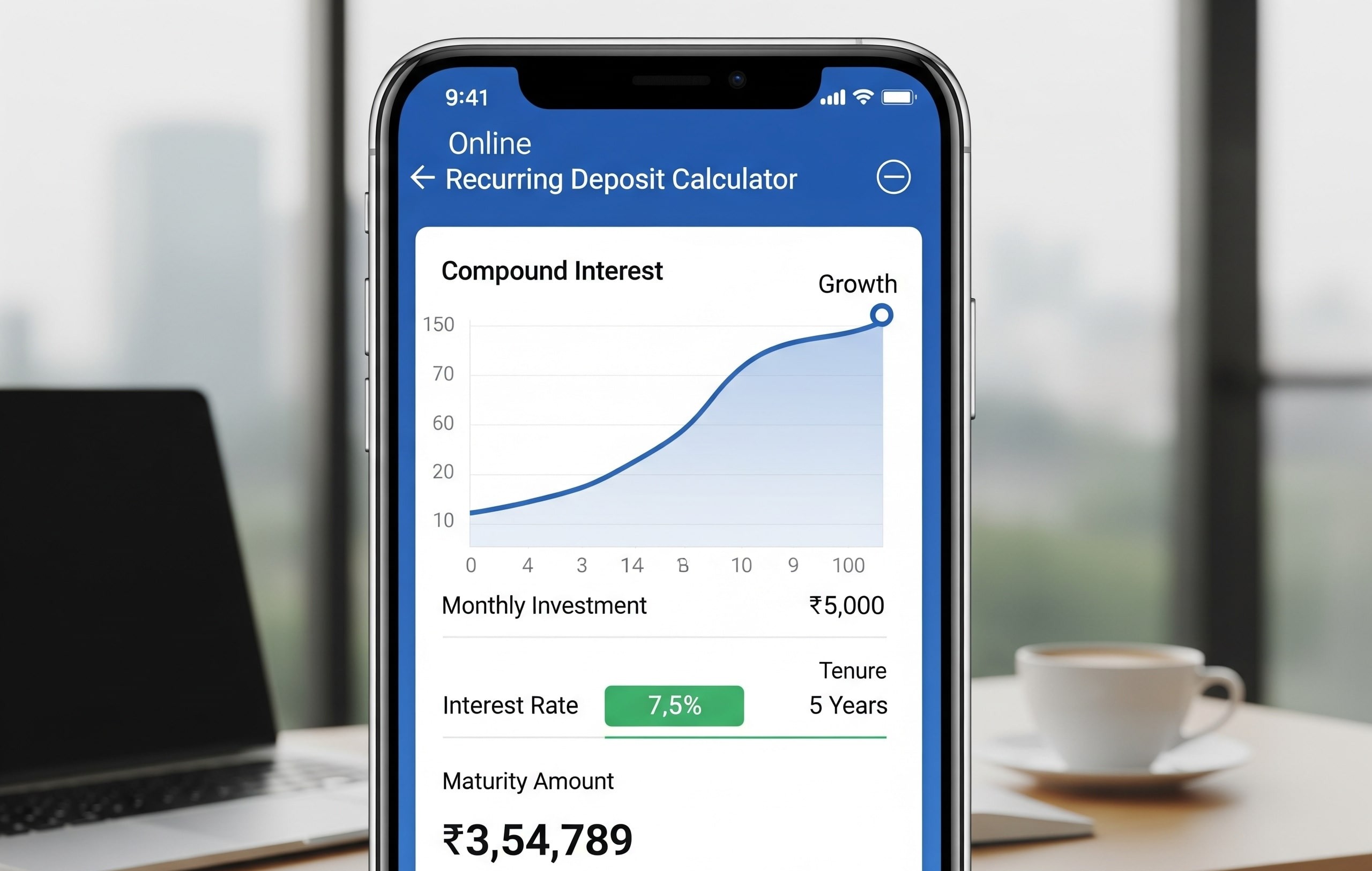Difference between Current Account and Savings Account
The differences between current accounts and savings accounts are that they are created for various purposes and have different features. For example, individuals who want to save should open a savings account, while organizations and businesses should open a current account.
The first step in anyone’s financial path is to open a bank account. However, various people have different goals: some may want safe money storage with a bit of interest, while others may want to use the report to fuel business growth with regular transactions and payments.
Thus, there are two highly prevalent types of accounts in the retail and private banking environment – current and saving account differences – to satisfy both of their objectives.
You’ve come to the perfect place if you’re starting with your finances and aren’t sure which account type is best for you. This blog post will outline the fundamental differences between a current account and a savings account to assist you in determining which account type is best for your financial goals. This article will go over the difference between current and savings accounts in greater detail.
Also Read: MSME New Definition
What is a current account vs a savings account?
A current account is a deposit account offered by banks to people or entities who plan to conduct a high volume of daily financial activities. This type of account facilitates day-to-day transactions but has the disadvantage of being unable to earn interest. The following characteristics help to clarify a current account:
- While individuals can use current accounts for everyday activities, corporations, trusts, associations, and private/public entities often utilize them for regular transactions.
- Although this sort of account does not pay interest on deposits, some banks have recently started to do so.
- With a current account, an overdraft is possible.
- The minimum balance required for these accounts is excellent. However, a penalty is enforced if it is not kept up to date, with money deducted from the user’s bank account.
- Current accounts are continual, meaning they do not have a set period during which they must be used.
- To open a current account, you must provide KYC documentation.
- The amount that can be deposited or withdrawn is unlimited; however, the account holder must have enough funds in their account to accomplish the operations.
Current accounts are divided into different types, allowing enterprises, entities, trusts, and others to choose the best one for their needs. These are:
- Premium current account
- Standard current account
- Packaged current account
- Foreign current account
Because banks provide a variety of current accounts, you must first choose which bank you want to start your account with. After that, consider all of the current account alternatives in terms of advantages, features, and services before choosing one!
Also Read: How to Earn 1000 Rs per Day without Investment Online
What is a savings account?
A savings account is used to save money while also collecting interest. It’s perfect for salaried people who want to save for their short- and long-term financial goals. Savings accounts typically pay interest and have a lower minimum balance requirement. However, account holders are limited to a certain amount of transactions and do not have access to an overdraft facility. The following are the characteristics of a savings account:
- Savings accounts have no limits on how much money can be deposited or withdrawn; nevertheless, it is required to maintain a minimum level in the account; otherwise, a penalty will be assessed by subtracting a set amount from the account. Most banks need users to keep a minimum amount to operate their accounts, but Payments Bank is an exception.
- A savings account can be operated for as long as the owner desires, implying no time limit on how long the account can be managed.
- Banks pay the account holder a specific interest rate on the amount deposited.
- A savings account does not allow for an overdraft.
- Savings account holders receive debit cards and online banking services for frequent transactions—whether online, offline, or at ATMs.
- On a daily/monthly basis, the number of transactions allowed in a savings account is restricted.
- Any Indian resident can create a savings account, but children and minors must have their accounts opened and maintained by their parents or guardians.
- A savings account encourages people to save.
Because savings accounts are one of the most acceptable methods to save money without carrying cash, you may choose from various savings account options. Here is a list of savings accounts offered by a variety of banks, which may vary from bank to bank:
- Regular savings account
- Salary savings account
- Zero balance savings accounts
- Children and minor savings account
- Family savings account
- Women’s savings account
- Senior citizen savings account
Difference between Current Account and Savings Account
Now that you have a basic understanding of the differences between a current account and a savings account, consider the following:
| Criteria of current account and saving account differences | Current Account | Savings Account |
| Purpose | To conduct a large number of business and commerce transactions. | To save money and build riches for the future. |
| Suitability | Traders, business owners, corporations, firms, and others can benefit. | It is suitable for paid individuals who have a steady source of income. |
| Rates of Interest | Generally, no interest is earned. | Interest is earned based on a benchmark, such as a bank rate. |
| Limit on Transactions | The number of transactions is unrestricted. | There are only a few transactions available. |
| Maintaining the Right Balance | Maintaining a high level of balance is essential. | The minimum balance that must be kept is modest. |
| Borrowing Ability | Short-term overdrafts are permitted for account holders. | The account holders do not have access to an overdraft facility. |
| Opening Balance | The opening balance for the current account is high. | It’s very low. |
| Passbook and overdraft facility | A passbook is not issued to the current account while the overdraft facility is provided. | The passbook is issued but the overdraft facility is not available. |
Current Account vs Savings Account
There is a massive difference between current accounts and savings accounts. These accounts cater to the user’s various financial demands, allowing for improved money management. Here are some of the critical differences between the current account and the savings account.
· Purpose
It is the first difference between a current account and a savings account. Current accounts make it easy to conduct a variety of daily commercial operations. Banks may also provide short-term overdraft options to avoid a cash shortage. On the other hand, savings accounts are for people who wish to save and increase their money. Banks paid interest on parked cash and used it to build the corpus.
· Suitability
Suitability is the main difference between a current and a savings account, with current accounts being appropriate for non-individuals such as sole owners, corporations, partnerships, trusts, and so on. On the other hand, savings accounts are designed specifically for salaried people who have a consistent income and don’t need to withdraw money frequently.
· Rates of Interest
Interest is rarely paid on current accounts. However, only a few institutions are presently offering minimal interest rates. On the other hand, savings account deposits earn interest regularly, ranging from 3.5 percent to 4% every year. This diagram depicts the differences between the current account and the savings account.
· Limit on Transactions
The transaction limit is another difference between the current account and the savings account. Current account holders are not limited to a certain amount of transactions. They can make many deposits and withdrawals with no problems. On the other hand, savings account customers may be charged a fee if they exceed a set amount of permissible transactions.
· Maintaining the Right Balance
Current account customers may need to keep much higher amounts, up to Rs. 1,000,000, depending on the difference between current account and savings account or account type and the offered perks. On the other hand, savings accounts may have a minimum balance requirement as low as Rs. 500, depending on the bank and account type. The current and saving account differences are displayed in maintenance.
· Borrowing Ability
Current account users can use the short-term overdrawing feature, which allows them to withdraw funds above their account balance. On the other hand, savings account holders are not allowed to get overdrawn. Another difference between the current account and savings account is the interest rate.
· Opening Balance
The opening balance required for a savings account is very low in comparison to the current account. The opening balances are different for different banks.
· Passbook and Overdraft Facility
The bank issue passbook to saving accounts only but an overdraft facility is not available, while for the Current account, a Passbook is not issued and an overdraft facility is available.
Also Read: SBI Tax Saving Mutual Fund
FAQs: Difference between Saving Account and Current Account
Q. What is the difference between a saving account and a current account?
Ans. A savings account is one in which you deposit money to earn interest on it, whereas a current account is one in which you deposit money to conduct business operations.
Q. What is the difference between the current account and the savings account’s necessary minimum balance?
Ans. Depending on the bank, a minimum amount is required to maintain the difference between current accounts and savings accounts. The minimum balance needed for a current account is higher than for a savings account.
Q. Is it feasible to go from a savings account to a checking account?
Ans. It is not possible to convert a savings account to a current account because of the facilities, features, and rewards of each category of current and savings account difference. For example, savings accounts are opened for personal use and are intended to be utilized in an emergency, as defined by the distinction between current and savings accounts. Businesses, on the other hand, use current accounts for routine transactions.
Also Read: Mutual Funds Are Subject To Market Risk
Which Bank Is Best For Demat Account
What Is a Good Credit Score in India
Best Washing Machine Brands in India
Hello there, my name is Phulutu, and I am the Head Content Developer at Nivesh Karlo. I have 13 years of experience working in fintech companies. I have worked as a freelance writer. I love writing about personal finance, investments, mutual funds, and stocks. All the articles I write are based on thorough research and analysis. However, it is highly recommended to note that neither Nivesh Karlo nor I recommend any investment without proper research, and to read all the documents carefully.






Leave a Reply